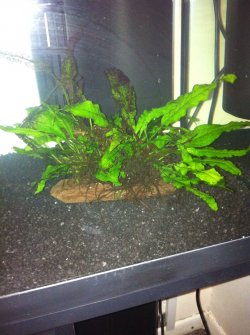I was wanting to use tetra safe start, in a new tank, unfortunately none of the local shops have any in stock!
However I’ve had my water tested today and the pet shop have said it’s the best he’s seen for a new tank, shall I start to stock my tank or should I use safe start first?
Only change I’ve made recently is adding a small plant on big wood today, wondering if it’s safe to add fish!
Probably not, depending. I'll explain (I hope).
First, to "cycle" the tank you need a source of ammonia, which encourages
Nitrosomonas bacteria to appear (they just do) and they "eat" the ammonia, producing nitrite; at this point,
Nitrospira bacteria will appear, and they eat the nitrite, producing nitrate. Our test kits will see ammonia rise, then lower to zero, while nitrite rises, then lowers to zero, and nitrate appears. The SafeStart greatly speeds this up and provided the fish load is not beyond what it can handle, all is well.
You mention plants. Plants take up ammonia/ammonium too, and faster than the bacteria, plus they do not produce nitrite. So with sufficient plants that are growing, and some being fast growing (floating plants are ideal for this aspect) you can add a few fish and more gradually without worry. But I would want to know the plant species--can you post a photo? Slow-growing plants are less helpful as their requirement for ammonia (their nitrogen) is very low.
The reason the store said your tank water tested good is because ammonia and nitrite would be zero, assuming you have not been adding some form of ammonia. So in fact the tank may have been running, but the cycle has not even started.
When I know the plant species, I can move ahead. But it would really make things much easier and safer if you could get some floating plants growing.
Byron.


